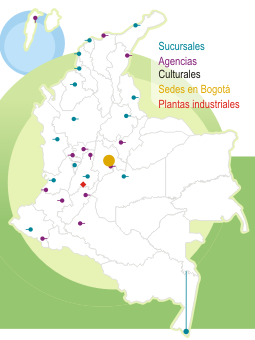Conclusions from the 93 Session of the Financial System Coordination and Monitoring Committee
Bogotá, 27 March 2025.
During the 93rd Session of the Financial System Coordination and Monitoring Committee held this Thursday, the Minister of Finance and Public Credit, the Governor of Banco de la República (the Central Bank of Colombia), the Financial Superintendent, the Director of the Financial Institutions Guarantee Fund (Fogafín in Spanish), and the Director of the Unidad de Proyección Normativa y Estudios de Regulación Financiera - URF (Financial Regulatory Unit) analyzed the main trends in leading performance indicators of the financial system during the last quarter of 2024 and January 2025.
Committee members highlighted that credit institutions continued to exhibit adequate capital and liquidity prudential indicators, above regulatory minimums. The loan portfolio, which is the main asset of these institutions, has shown recovery since mid-2024 and is expected to resume a growth path by the end of the year. This recovery trend is explained by the performance of all types of loans, except for consumer loans. During the period analyzed, it was noted that the corporate loan portfolio, which has the largest share within the total loan portfolio, exhibited positive real growth rates for the first time since May 2023. Positive real growth rates were also seen in the mortgage and microcredit loan portfolios. This favorable trend for the period evaluated was related to positive expectations for economic recovery, lower inflation levels, and improved growth prospects.
In line with the adjustment process in the credit market, the non-performing loans continued to decrease, mainly in consumer loans and microcredits. However, some segments of the corporate and housing loan portfolios showed signs of deterioration. The non-performing loan portfolio as a share of the total loan portfolio remains above the average for the last five years. This has been accompanied by a level of provisions that covers the entire non-performing loan portfolio.
In assessing the main risks to the financial system, increased global uncertainty was highlighted in the context of ongoing geopolitical conflicts, which have led to protectionist stances and threats of trade and financial sanctions. Vulnerabilities associated with local fiscal challenges were also discussed. Furthermore, the importance of continuing to monitor specific economic sectors where non-performing loan ratios remain high was emphasized.
Authorities highlighted the importance of maintaining an orderly transition regarding changes to the net stable funding ratio (NSFR), which will take effect in September 2025. Additionally, Committee members stressed the importance of adopting regulatory standards for interest rate risk in the banking book, which began in 2025.
Conclusions
Based on the joint analysis of the indicators of financial institutions, the members of the Committee concluded that the system has remained resilient thanks to the current prudential regulation, forward-looking supervision, and the strengthening of risk management by credit institutions in an environment of greater uncertainty. They also pointed out that the leading indicators of the financial system during Q4-2024 and January 2025 align with the recovery expectations mentioned since the end of the previous year.
For more detailed information on the main trends in the financial system, please refer to the following reports:

































































